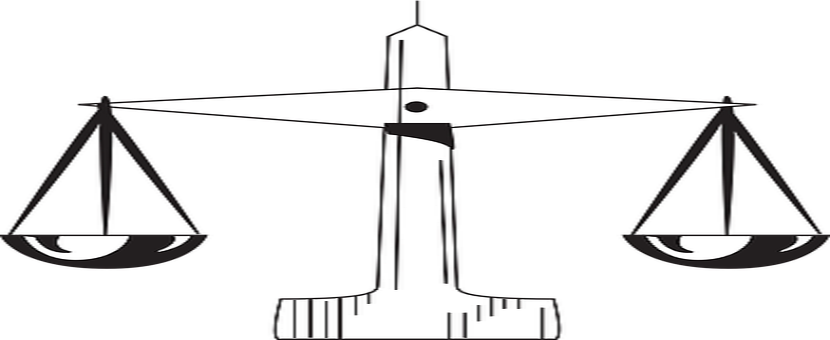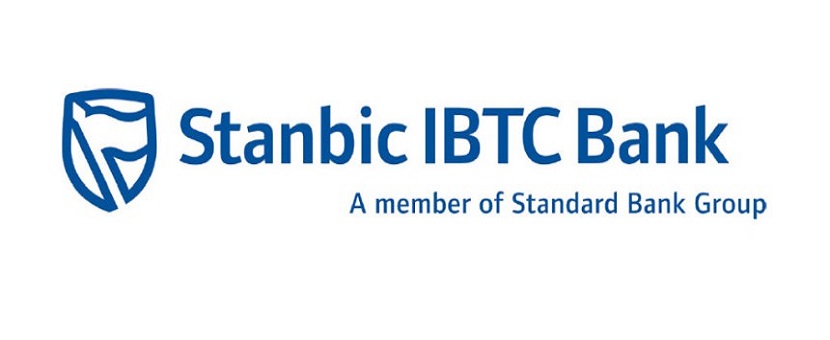In the determination of rights and liabilities of persons under the Nigerian justice system, the primary duty of the courts is the application of law to facts to arrive at a conclusion. To achieve this, there are other rules of procedures (forming the whole body of procedural law) that assist the courts in entertaining and treatment of cases. This body of procedural law is distinct from the specific laws that ordinarily govern the activities of men, known as substantive law. For instance, the rules that prescribe the kind of court documents to file, when and how to file the same in court is procedural while the rule that establishes your rights in contract is substantive. Rules of procedure can be quite complex, especially when dealing with issues of filing appeals. Excellent display of expertise is required of lawyers in courtroom practice to successfully navigate through these rules.
In the recent case of Stanbic IBTC Bank Plc v. Long Term Global Capital Ltd & Anor [2019] 3 NWLR (Pt. 1659) 374; Stanbic IBTC Bank Plc v. Long Term Global Capital Ltd & Anor [2020] 2 NWLR (Pt. 1707) 1, we shall see how the merger of technicality and suspected affront on the authority of the court led to judgments that will probably haunt Stanbic IBTC Bank for the rest of its corporate existence.
The Story
In 2007, Stanbic IBTC Bank Plc (“The Appellant” or “The Bank”) granted several overdraft facilities to the Respondents – Long Term Global Capital Ltd (“L.T.G.C” or “The Company”) and Mr Patrick Akinkuotu (the CEO of L.T.G.C) to the tune of about N1,250,000,000. The facilities were secured with the shares held by the Respondents in various companies. It happened that upon an instruction received via e-mail, the Bank sold about 28 Million units of Guaranty Trust Bank Plc shares held by the Respondents at the sum of over N267 Million, towards recovery of the facilities.
The Respondents became aggrieved and contended that the proceeds of the shares sold by the Bank was low. They also argued that they had liquidated the overdraft facilities granted to them by the Bank. Consequently, they sued the Bank for breach of contract and claimed damages also for loss of business opportunities.
The trial Court entered judgment in favour of the Respondents and awarded them N2.5 Billion as damages. The trail Court held that the Bank acted wrongly in selling the Respondents’ shares based solely on the informal correspondence by e-mail between the 2nd Respondent (Mr Akinkuotu) and the officer of the Bank (Mr N. Udoh) while ignoring entirely the specific terms of the sale mandate officially executed and issued by the Respondents.
Aggrieved by the decision, the Bank appealed to the Court of Appeal by a Notice of Appeal filed on 7/12/2010, a day after the Judgment was delivered. The Court of Appeal dismissed the appeal for failure of the Bank to adhere strictly to certain rules of procedure in relation to appeals. The Bank appealed to the Supreme Court which affirmed the decision of the Court of Appeal and consequently dismissed the appeal.
The Bank, still hungry and thirsty for justice, again applied to the Supreme Court to review its earlier decision. The application was also dismissed.
The Controversial Rules of Procedure
The rules of procedure that wreaked havoc on the Bank were the ones touching on Notice of Appeal and the filing of Brief of Argument.
Notice of Appeal
As a rule of procedure, a Notice of Appeal is a court document (or court process) used in appealing a decision. It usually contains numbered “grounds of appeal” which represents a succinct outlining of the basis for complaint against the Judgment being appealed against. In line with procedural rules, a Notice of Appeal may be amended. In the instant case, the Bank had sought to amend its Notice of Appeal earlier filed. The Court of Appeal granted it leave (permission) to amend the same on 5/7/2011. Upon obtaining the leave of the Court of Appeal to amend the Notice of Appeal, the Bank incorporated additional grounds of appeal (Grounds 3, 4, 5, 6, 7 and 10).
The Respondents challenged the Amended Notice of Appeal on the basis that the additional grounds incorporated into the Notice of Appeal were incorporated without the permission (leave) of the Court. This is notwithstanding that the Bank obtained leave to amend the Notice of Appeal in the first place. The technical argument here was that as at 5/7/2011, the Bank was already outside the 3 months to file the additional grounds of appeal as of right, in that the Judgment was delivered on 6/12/2010. Thus, the Bank was expected to specifically seek a separate leave to appeal on those additional grounds. In other words, the leave to amend the Notice of Appeal sought and obtained on 5/7/2011 was not enough. To understand the logic here better, we must note that an appellant may appeal a decision either as of right or with the leave of the Court. The Rules of Procedure have clearly categorised these decisions. In the instant case, the Bank does not require the leave of the Court to appeal the Judgment if it appealed within 3 months. The Bank actually appealed a day after the Judgment was delivered. However, the Bank amended its Notice of Appeal (incorporating the additional Grounds of Appeal) after 3 months.
The Bank argued that an amendment of a court process relates back to the date the original process was filed. This is correct in law. Therefore, the Bank’s Amended Notice of Appeal relates back to 7/12/2010 when the original Notice of Appeal was filed. Thus, the additional Grounds of Appeal incorporated into the Amended Notice of Appeal should not be viewed as falling outside the three months within which to appeal. In other words, no leave of the Court is separately required to file those additional grounds. And even from a stronger perspective, the leave of the Court obtained to amend the Notice of Appeal in the first place ought to reasonably suffice.
The Court of Appeal took sides with the Respondents and struck out the additional Grounds of Appeal which the Bank incorporated into its amended Notice of Appeal and dismissed the appeal.
Brief of Argument
The Bank had applied to the Court of Appeal for more time to enable it file its Brief of Argument in support of the appeal. A Brief of Argument, as the name suggests, is a court process filed by an appellant containing details of legal arguments/reasons for attacking the judgment being appealed against. In support of its application, the Bank attached a sample of the Brief of Argument it intends to file and this was in the form of an exhibit marked Exhibit “AA1”. The Court of Appeal granted the application.
As a rule of procedure, the Bank was expected to file the exact replica of the Brief of Argument attached as sample/exhibit to its application. However, the Bank failed to do so. Instead, it filed an entirely different Brief of Argument. Whilst the one it earlier presented as sample was 13 pages, the one it eventually filed was 25 pages. The Bank supplied an explanation as to why it filed a Brief of Argument different from Exhibit AA1. This was that the 25-page Brief of Argument had to include arguments that capture the additional Grounds of Appeal filed.
The Supreme Court found this absolutely infuriating, and as constituting a disobedience to Court directives, in that what the Court approved for filing was the 13-page Brief of Argument. Ultimately, the Supreme Court upheld the decision of the Court of Appeal and unanimously dismissed the appeal. Onnoghen, CJN (as he then was) held:
…In the instant case, Appellant’s failure to file an exact replica of Exhibit “AA1” as ordered by the Court below on 14/9/2011 has rendered its Brief incompetent and liable to be struck out. Based on the above reasons, I agree completely with the argument of the Respondents’ learned Counsel that since the Order of the Court was attached specifically to Exhibit “AA1”, Appellant cannot vary the Order by filing a Brief of Argument which is at variance with the said Exhibit “AA1” and come to the conclusion that the Court below was right in striking out Grounds 3, 4, 5, 6, and 10 of the Appellant’s Grounds of Appeal. I also hold that the decision of the Court below to strike out those Grounds did not occasion any miscarriage of justice on the part of the Appellant.
Clearly, the dismissal of the appeal was not based on any consideration of the real gist of the case, but on the seeming flouting of the rules of procedure by the Bank. The writer entirely agrees with the Bank’s Counsel, O. Ayanlaja, SAN. The submission presented by the learned Senior Advocate at page 381 of the report is wholly adopted. The Learned Silk submitted that “It is the height of miscarriage of justice for a Court of law that has granted to an appellant leave to amend its Notice of Appeal by filing additional Grounds of Appeal to turn round at a later stage of the same proceedings to strike out the additional Grounds of Appeal on the ground that the Appellant argued additional Grounds of Appeal for which he did not seek and obtain leave of Court.”
The Bank ought to have been mindful that courts of law jealously guard their authority. However, on a close scrutiny, can one really say that the filing of the 25-page Brief of Argument was an affront on the authority of the Court such as to warrant the wielding of the big stick? The writer does not think so. We must note that the 25-page Brief of Argument was served on the Respondents. The Respondents did not suffer any prejudice because they had the time to react to the same.
Application for Review
Stanbic IBTC Bank Plc v. Long Term Global Capital Ltd & Anor [2020] 2 NWLR (Pt. 1707) 1
Given the level of dissatisfaction which trailed the “big money” Judgment of the trial Court and Court of Appeal, upheld by the Supreme Court, the Bank applied to the Supreme Court to review its decision in the interest of justice.
The Supreme Court acknowledged that the apex Court has the inherent power to set aside its own judgment in very stringent and uncommon circumstances. Relying on a host of judicial authorities, Abba Aji, JSC identified the circumstances under which the Supreme Court may set aside its own judgment as follows:
- Where there is a clerical mistake in the judgment or order;
- Where there is an error arising from accidental slip or omission;
- Where there arises the necessity for carrying out its own meaning and to make its intention plain;
- Where any of the parties obtained judgment by fraud or deceit;
- Where such decision is a nullity;
- Where it is obvious that the court was misled into giving the decision under a wrong belief that the parties consented to it;
- When judgment was given without jurisdiction;
- Where the procedure adopted was such as to deprive the decision or judgment of the character of a legitimate adjudication;
- Where the writ or application was not served on the other party, or there is denial of fair hearing;
- Where the decision/judgment is contrary to public policy and will perpetuate injustice.
The apex Court took the view that there was nothing for the Court to check out in the case by way of review, and that rather, the Bank simply moved “To pull the wool in the eyes of the Court again and again to vex it.” (p. 21) The Court in unanimously dismissing the application for review described the same as frivolous, baseless, scandalous and contemptuous.
To get the Supreme Court to overrule itself is like passing a camel through the eye of the needle. The apex Court is expected to uphold and preserve its integrity and authority as the final Court and as a policy-making Court. Again, one panel of Justices of the Supreme Court is careful not to overrule the decision by another panel of Justices in the name of review. Making the conditions for review strict helps to protect the apex Court from ridiculing itself.
Thus, except in really exceptional cases, a decision of the Supreme Court should not be set aside. The view has long been expressed that the Supreme Court is not a final Court because it is infallible. As a matter of fact, a further appeal to any higher court (if possible) may lead to a different decision entirely. In the case of Brown v. Allen 344 U.S. 443 (1953) Justice Robert H. Jackson brilliantly explained as follows:
Whenever decisions of one court are reviewed by another, a percentage of them are reversed. That reflects a difference in outlook normally found between personnel comprising different courts. However, reversal by a higher court is not proof that justice is thereby better done. There is no doubt that if there were a super-Supreme Court, a substantial proportion of our reversals of state courts would also be reversed. We are not final because we are infallible, but we are infallible only because we are final.
It was from the above famous dictum that Oputa, JSC (of blessed memory) drew inspiration when his Lordship re-echoed the last sentence in Adegoke Motors Ltd. v. Adesanya [1989] 3 NWLR (Pt. 109) 250 – “We are not final because we are infallible, but we are infallible only because we are final.”
Although we find it difficult to convincingly fault the Supreme Court for refusing the application for review, however, one point weighs heavily on our minds. The Supreme Court conceded that it may consider reversing itself where the procedure adopted was such as to deprive the decision or judgment of the character of a legitimate adjudication.
It is submitted that the procedure adopted in the instant case which saw to the nullification of the enumerated Grounds of Appeal and Brief of Argument was too harsh and as such deprives the decision ultimately reached of the character of legitimate and just adjudication.
Conclusion
We must note that the essence of procedural rules is to make court proceedings more orderly and precise, both for the courts and the lawyers. As everything associated with law, the rules of procedure are dynamic as they keep evolving. This accounts for the reason the rules of various courts constantly undergo review. Giving the technicalities that often arise in the application of the rules of procedure, the courts have held several times that technicality will not be allowed to defeat the ends of justice. But this holding has not been an easy one to uphold by the courts. This is due to the peculiarities of individual cases. Considering the line of cases decided based on technicalities in our law reports, including the instant case, it is ironic to continue to say that the days of technicalities are over.














